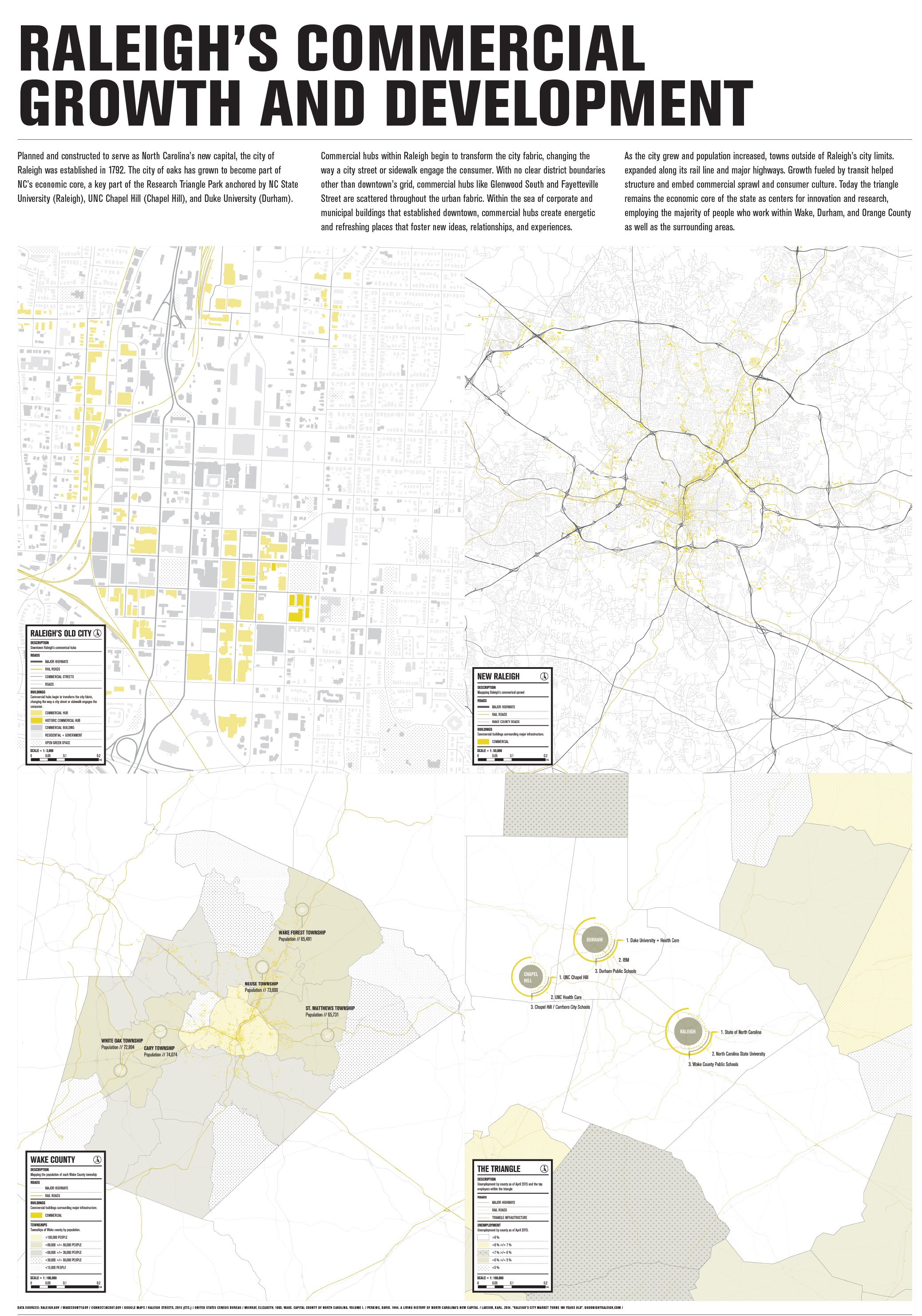
 RALEIGH’S COMMERCIAL GROWTH AND DEVELOPMENT & RALEIGH’S COMMERCIAL SPRAWL
RALEIGH’S COMMERCIAL GROWTH AND DEVELOPMENT & RALEIGH’S COMMERCIAL SPRAWL
Planned and constructed to serve as North Carolina’s new capital, the city of Raleigh was established in 1792. The city of oaks has grown to become part of NC’s economic core, a key part of the Research Triangle Park anchored by NC State University (Raleigh), UNC Chapel Hill (Chapel Hill), and Duke University (Durham).
Commercial hubs within Raleigh begin to transform the city fabric, changing the way a city street or sidewalk engage the consumer. With no clear district boundaries other than downtown’s grid, commercial hubs like Glenwood South and Fayetteville Street are scattered throughout the urban fabric. Within the sea of corporate and municipal buildings that established downtown, commercial hubs create energetic and refreshing places that foster new ideas, relationships, and experiences.
As the city grew and population increased, towns outside of Raleigh’s city limits. expanded along its rail line and major highways. Growth fueled by transit helped structure and embed commercial sprawl and consumer culture. Today the triangle remains the economic core of the state as centers for innovation and research, employing the majority of people who work within Wake, Durham, and Orange County as well as the surrounding areas.